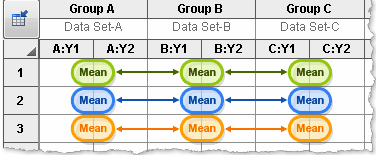
We have previously described similar histological phenotypes with differential invasive potential in GBM patient-derived orthotopic xenografts based on organotypic tumor spheroids 17. 1a, additional examples on Supplementary Fig. Inter-patient differences can be observed when patient-derived GBM stem-like cells (GSCs) are implanted into the mouse brain: Non-invasive (NI) cells grow as circumscribed tumors displaying aberrant blood vessels and necrosis low invasive (LI) cells partially invade into the cortex and traverse the corpus callosum to the contralateral hemisphere and highly invasive cells (HI) completely colonize the brain parenchyma of both hemispheres (Fig. RNA interference screen identifies ZFAND3 as a candidate gene involved in GBM invasionĪlthough GBMs in patients are invariably invasive, not all patient-derived GBM cells display the same invasion capacity. Finally we identify ZFAND3 as a transcription factor that regulates expression of adhesion and invasion-related genes. We show that nuclear ZFAND3 expression is increased in the infiltrative compartment in GBM patient biopsies and that nuclear localization is essential for ZFAND3 activity. We find that ZFAND3 strongly potentiates invasiveness of GBM patient-derived cells in vitro, ex vivo and in vivo. ZFAND3 (also known as testis expressed sequence 27, Tex27) was initially characterized during mouse sperm maturation 13, 14 and was associated with susceptibility for development of type 2 diabetes in humans 15, 16. Zinc finger (ZF) proteins are involved in nucleic acid recognition, transcriptional activation, protein folding and assembly, however the function of ZFAND3 remains unknown. Here, we applied genome-wide RNA interference in GBM and identified AN1-Type Zinc Finger protein 3 (ZFAND3) as a key regulator of GBM cell invasion. Such approaches allowed e.g., the identification of genes involved in cell migration and invasion in various cancer models 10, 11 including GBM 12.

RNA interference screens are powerful tools to uncover gene function and their contribution to specific cellular phenotypes 9. Although significant efforts were carried out to elucidate the mechanisms underlying GBM cell invasion (e.g., cytoskeleton remodeling, secretion of proteases, intracellular signaling) 5, therapeutic approaches targeting GBM invasion have not heralded any benefit so far and novel targets regulating the invasive process are actively being pursued 6– 8. GBM cells insinuate themselves in the interstitial space of the neural tissue or migrate along blood vessels and white matter tracts, relying on basal membranes and extracellular matrix (ECM) components 4. Furthermore it was recently shown that glial tumors form multicellular networks through ultra-long membrane protrusions, so-called tumor microtubes, that facilitate brain invasion and contribute to treatment resistance 2, 3.ĭue to the specific structure of the adult brain, GBM invasion differs from vascular or lymphathic pathways classically associated with peripheral metastatic cancer. Invasive cells that migrate away from the tumor core escape surgical resection, are partially sheltered from radio- and chemotherapy and are not detected by standard imaging techniques. Malignant tumors of the brain, including Glioblastoma (GBM), are characterized by a high invasive capacity leading to a spread throughout the brain parenchyma 1, a growth pattern which is largely accountable for the current therapeutic failure and poor patient outcome. Further investigation in ZFAND3 function in GBM and other invasive cancers is warranted.Ĭancer cell invasion and ensuing metastasis are a leading cause of death.

Our findings indicate that ZFAND3 acts within a nuclear protein complex to activate gene transcription and regulates the promoter of invasion-related genes such as COL6A2, FN1, and NRCAM. At the mechanistic level, we find that ZFAND3 activity requires nuclear localization and integral zinc-finger domains.

Using patient-derived cellular models, we show that loss of ZFAND3 hampers the invasive capacity of GBM, whereas ZFAND3 overexpression increases motility in cells that were initially not invasive.
#ONE WAY ANOVA GRAPHPAD PRISM 8 DRIVER#
Here, we use a genome-wide interference screen to determine invasion-essential genes and identify the AN1/A20 zinc finger domain containing protein 3 (ZFAND3) as a crucial driver of GBM invasion. The infiltrative nature of Glioblastoma (GBM), the most aggressive primary brain tumor, critically prevents complete surgical resection and masks tumor cells behind the blood brain barrier reducing the efficacy of systemic treatment.


 0 kommentar(er)
0 kommentar(er)
